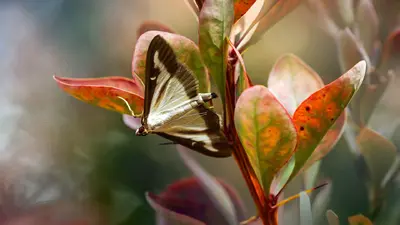The Role of Consciousness in Evolution
Peter Godfrey-Smith
About the Course
In the theory of evolution, only the fittest survive. Species not best adapted to their environments fall by the wayside. But might species have an active role in shaping their evolutionary fate? Join Peter Godfrey Smith, bestselling philosopher of consciousness, as he looks at evolution from the perspective of organisms taking charge of the world around them, and explores the role consciousness plays in this. In reinventing how we think about evolution, Godfrey-Smith offers a novel picture of the course of life on Earth and how we might meet the challenges of our time.
By the end of the course, you will have learned:
- How organisms can actively shape their evolutionary trajectories.
- The relationship between consciousness and evolutionary processes.
- Why evolution is not solely a passive adaptation to environments.
- How niche construction influences the course of life on Earth.
- The philosophical implications of evolution for understanding life and mind.
- What this perspective reveals about humanity’s role in future evolutionary challenges.
As part of the course there are in-video quiz questions to consolidate your learning and discussion boards to have your say.
IAI Academy courses are designed to be challenging but accessible to the interested student. No specialist knowledge is required.
About the Instructor
-
Peter Godfrey-Smith
Professor in the School of History and Philosophy of Science at the University of Sydney, and author of Other Minds: The Octopus, The Sea, and The Deep Origins of Consciousness and Metazoa: Animal Life and the Birth of the Mind.
Course Syllabus
-
Part One: A history of consciousness, evolution, and causalityWhat is the real driver of evolution: the environment or the organism? What was the evolutionary impetus to develop consciousness and how did this shape the evolutionary story?
-
Part Two: Humanity and society in the evolutionary storyHow do we get biological causality wrong, and what does this mean for our human societies? Until we understand the impact species can have on their local environments, we will never understand the way humans affect our environments.
Suggested Further Readings
Books
-
Godfrey-Smith, P. (2016). Other Minds: The Octopus and the Evolution of Intelligent Life. London: William Collins.
-
Godfrey-Smith, P. (2020). Metazoa: Animal Life and the Birth of the Mind. London: William Collins.
-
Dennett, D. C. (1991). Consciousness Explained. Boston: Little, Brown.
-
Feinberg, T. E., & Mallatt, J. (2016). The Ancient Origins of Consciousness: How the Brain Created Experience. Cambridge, MA: MIT Press.
-
Nagel, T. (1979). Mortal Questions. Cambridge: Cambridge University Press.
-
Deacon, T. W. (1997). The Symbolic Species: The Co-evolution of Language and the Brain. New York: W. W. Norton.
Journal Articles & Papers
-
Godfrey-Smith, P. (2019). Evolving Along the Tree of Life: Consciousness and the Metazoan Mind. Philosophical Transactions of the Royal Society B, 374(1774), 20180382.
-
Nagel, T. (1974). What Is It Like to Be a Bat? The Philosophical Review, 83(4), pp. 435–450.
-
Ginsburg, S. & Jablonka, E. (2007). The Transition to Experiencing: I. Limited Learning and Limited Experience. Biological Theory, 2(3), pp. 218–230.
-
Edelman, D. B., Baars, B. J. & Seth, A. K. (2005). Identifying Hallmarks of Consciousness in Non-Mammalian Species. Consciousness and Cognition, 14(1), pp. 169–187.
Chapters & Essays
-
Block, N. (2007). Consciousness, Accessibility, and the Mesh Between Psychology and Neuroscience. In: Block, N. Consciousness, Function, and Representation: Collected Papers Volume 1. Cambridge, MA: MIT Press, pp. 385–426.
-
Tye, M. (2000). Consciousness, Color, and Content. Cambridge, MA: MIT Press. (especially chapter 4 on animal consciousness)


